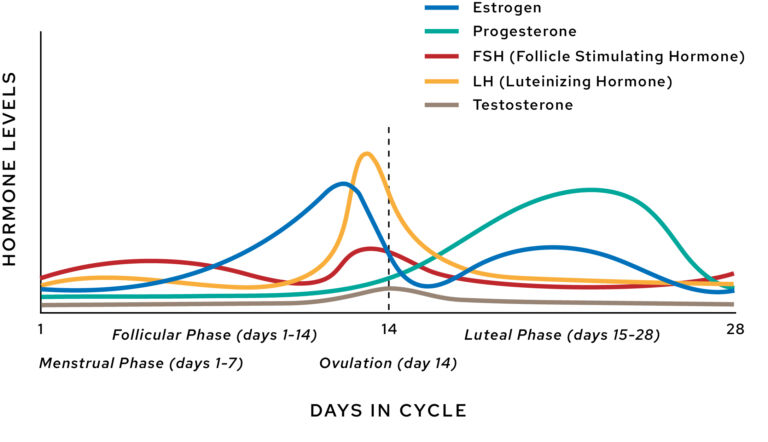
You expect a cycle. You track days. But it doesn’t start with the calendar—it starts with how your hormones decide the pace. Estrogen rises, then falls. Progesterone responds. The brain sends the first signal.
When that rhythm falters, the cycle shifts. Sometimes early. Sometimes never. You notice the irregularity, but the body felt the confusion first.
And that confusion is rarely random.
Estrogen rises too early or lingers too long
Your cycle arrives twice in one month. Or not at all. Estrogen rises too early or lingers too long. It builds the lining. Prepares for ovulation. But when it’s unchecked, it overstimulates.
You feel breast tenderness. Mood changes. Bloating. Then either a heavy flow or complete silence.
What should rise and fall now just hovers.
Progesterone arrives late or not at all
You feel weepy. Restless. The second half of your cycle feels raw. Progesterone arrives late or not at all. Without it, ovulation may still happen—but the balance breaks.
Your period shortens. Or drags. Or becomes unpredictable. Sleep suffers. Irritability sharpens. You blame yourself for overreacting.
But it’s often the absence of this one hormone that keeps everything too loud.
The brain starts the cycle—but stress can mute the signal
You wait. Nothing comes. The brain starts the cycle—but stress can mute the signal. GnRH pauses. FSH weakens. The ovaries wait for instructions they never receive.
And your body feels off, even before the missed period. Hunger changes. Focus disappears. You’re not “late.” You’re un-signaled.
This silence has a reason.
Insulin resistance delays ovulation and disrupts timing
You feel hungrier. Moodier. The cycle shifts again. Insulin resistance delays ovulation and disrupts timing. It pushes estrogen up. Lowers progesterone. The balance slips.
You may bleed monthly, but not always after ovulation. You may spot for days. Or feel bloated without flow.
Blood sugar becomes a hormonal instruction—one that alters your entire rhythm.
Thyroid dysfunction stretches or shortens the whole process
Your period used to be steady. Now it’s scattered. Thyroid dysfunction stretches or shortens the whole process. It slows the signal. Or speeds it up unpredictably.
You may skip ovulation entirely. Or bleed without warning. It’s not always dramatic. But the pattern’s gone.
And once the pattern fades, symptoms multiply.
High prolactin tells the ovaries to stay quiet
You’re not breastfeeding. But you leak. Or feel pressure. High prolactin tells the ovaries to stay quiet. It lowers estrogen. Blocks ovulation. Your cycle vanishes.
You feel tired. Dull. Flat. You assume it’s age. But it’s often a hormone meant to help now asking you to pause.
And it does so silently.
PCOS doesn’t always look like cysts—it looks like confusion
You hear “normal labs.” You see no cysts. But your cycle’s irregular. PCOS doesn’t always look like cysts—it looks like confusion. Androgens rise. Ovulation falters. Estrogen dominates.
Hair growth increases. Skin breaks out. Bleeding becomes guesswork.
And the condition lives in the rhythm, not just the scan.
Perimenopause makes regularity irregular without warning
You still cycle—but it’s shifting. Perimenopause makes regularity irregular without warning. Estrogen surges wildly. Progesterone fades gradually.
You bleed twice in a month. Then skip the next. Emotions spike. Sleep disappears. You feel like someone else.
But this isn’t dysfunction—it’s a transition. And transitions rarely move in straight lines.
Birth control doesn’t regulate—it replaces
You’re given the pill for irregularity. And it seems better. But birth control doesn’t regulate—it replaces. It silences the cycle. Provides a schedule. But it doesn’t fix the root.
When you stop, the irregularity often returns. Or worsens.
Because the body never relearned its own rhythm. It just borrowed one.
